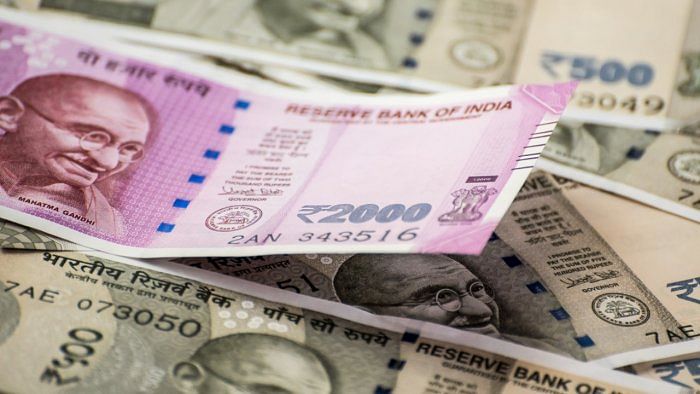
Amid much fanfare, Prime Minister Narendra Modi launched the Reserve Bank of India’s retail direct scheme on Friday – a scheme by which retail investors can buy government securities directly from the central bank. RBI governor Shaktikanta Das had announced earlier this year that the central bank is planning to come out with such a scheme.
“The Reserve Bank of India-Retail Direct (RBI-RD) Scheme will bring G-secs within easy reach of the common man by simplifying the process of investment,” the central bank said.
The move was primarily aimed at deepening the bond market. The government securities market is dominated by institutional investors – banks, mutual funds etc. and retail participation was only debt mutual funds with limited options.
“The scheme, which is simple to operate, allows retail investors to invest in the safe G- Secs. This provides retail investors an opportunity to diversify their portfolios with risk-free fixed income assets. Also, this move will demystify the govt bond market which was hitherto an area of experts and professionals,” said VK Vijayakumar, Chief Investment Strategist at Geojit Financial Services.
Market participants said the scheme will boost the government securities market and has the potential to lower the government’s borrowing cost.
“RBI Retail Direct Scheme will boost the hitherto large untapped potentials of Gilt investment and will provide direct, convenient, cost-free liquid and zero risk investment opportunity in Gilt to HNI and other retail investors. This is a widely much awaited positive reform and will forge a paradigm shift in the bond market, spiking up demand for government bonds and lowering the cost of the government borrowing going forward,” Bal Krishna Piparaiya, Principal Director, Brickwork Ratings said.
Also Read | How cryptocurrency has re-wired capitalism
Interest rate risk
Since government bonds enjoy sovereign guarantees, there is no credit risk. However, investments in government securities are not completely risk-free. There is interest rate risk.
“Investors need to understand that due to interest rate movements there could be mark-to-market gains or losses. They should be made aware of that,” said Kaustubh Belapurkar, Director, Fund Research, Morningstar Investment Adviser India.
“A layman who is buying the bond may think there is no risk involved…of course there is no credit risk but there are interest rate risks. That is something the investor should be made well aware of,” Belapurkar told DH.
The interest rate risk assumes significance particularly at a time when interest rates are expected to harden. The yields on government’s bonds have already started hardening. Yields and bond prices are inversely related.
After sharply cutting interest rates during the onset of the Covid-19 pandemic in India in March 2020 – when the repo rate was reduced by 75 bps and 40 bps in March and May of 2020, the RBI has maintained a status quo since then.
The central bank has maintained status quo on interest rates since then as the focus was to support growth which turned negative during the previous financial year.
RBI had said that the accommodative stance of the monetary policy will be maintained as long as necessary to revive and sustain growth on a durable basis.
However, the yields on government bonds have hardened in the last few months owing to a variety of factors like hardening of international crude oil prices. The section of the market expects RBI to start raising the repo rate during the first quarter of 2022.
When bond yields rise and prices fall, investors have to book mark-to-market loss. Mark to market is an accounting tool which is used to record the value of assets at the current prices. When the current value becomes less than the original value, there is a loss. Similarly, when the current value is more than the original value, there is mark-to-market gain.
“Another important aspect is market liquidity. Not only buy, the investor should be able to sell. Not all investors will hold it to maturity,” Belapurkar added.
How will it work
To buy and sell government securities, the retail individual investor needs to open an account, namely ‘Retail Direct Gilt (RDG) Account’ with RBI through an online portal – https://rbiretaildirect.org.in .
Investors can register on the online portal by filling up the online form and use the OTP received on the registered mobile number and email id to authenticate and submit the form, RBI had said.
The investor can invest in primary issuances of government securities by placing bids, and also can buy and sell such securities in the secondary market through the NDS-OM platform. NDS-OM is a screen based electronic anonymous order matching system for secondary market trading in Government securities owned by RBI. Banks, primary dealers, insurance companies are members of the system.
The ‘Retail Direct Gilt (RDG) Account’ can be opened by any retail investors if they have, Rupee savings bank account maintained in India, Permanent Account Number (PAN), other valid document (OVD) for KYC, a valid email id and a Registered mobile number.
“The need to deepen the bond market –providing direct access to G-secs under the RBI Retail Direct Scheme is aimed at strengthening the financial market by harnessing digital payment technology that the retail investor in India is now familiar with. This will put access to G-secs on par with the already robust corporate bond market,” Anjana Potti, Partner, J Sagar Associates (JSA) said.
(The writer is a Mumbai-based journalist)